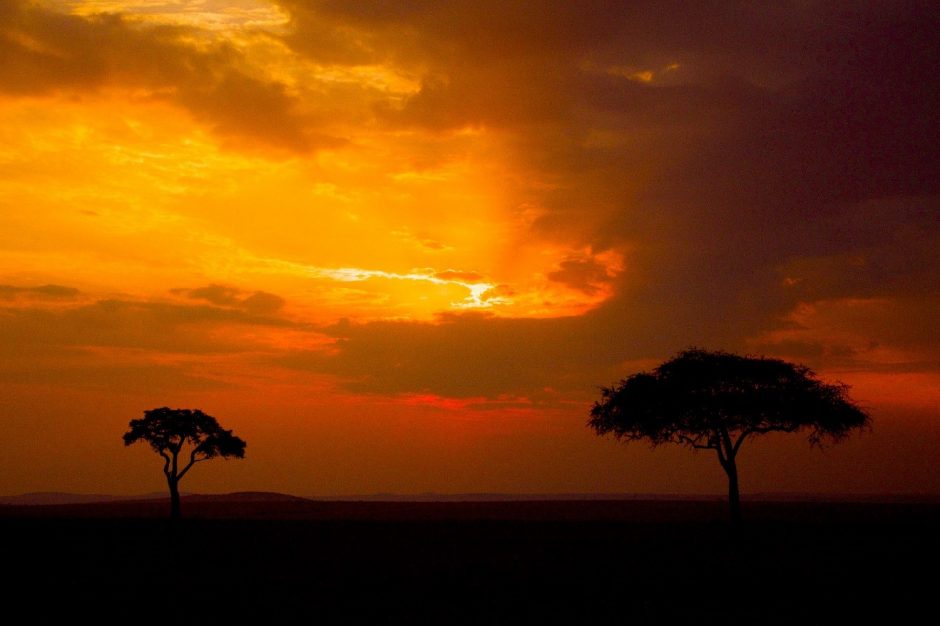
How to Get This Shot – African Sunset
There’s something unmistakable about the sun setting over the glorious African savanna. Between the wide open expanse of places like Kenya’s Maasai Mara and Tanzania’s Serengeti, along with the amazing hues and textures that can come about in this unique ecosystem, it’s one of the best places in the world away from the coast to take sunset photos.
If you’re headed to Africa and want to come away with a stunner of a sunset photo, follow along here to get the tips and tricks to ensure success each and every time.
- First, you have to get yourself there. Sure, this seems like a no-brainer tip, but it’s important in exactly how you get to and explore Africa. One of the most important things is to figure out whether a specialized photo trip is best for you. If you want more space in your vehicle, more time at peak photography hours, like daybreak and dusk, and helpful on-trip photography instruction, it’s a good idea to seek out an outfit that can provide just this. In addition, when planning a safari with an outfitter, ask about the specific areas they visit and what their policy is on wildlife watching and photography after the sun sets. Unless they’re going to certain types of conservancies, many National Parks in Africa do not allow you to be on trails after dark, thus causing a mad rush to get back to camp during the sunset. With specialized Africa photo safaris, you’ll often go to areas that allow you to stay out past sunset, which means that you’ll get unimpeded views, and photographs, of this brilliant aspect of Africa.
- Next, you’ve got to pick our your exact spot. Again, if on a specialized photo tour, your guide will likely have his or her favorite places, making it easy on you to pick one! But if you are going on your own, there are a few key things to look for on the landscape. First things first, you must figure out where the sun will be setting. Of course aiming west is always a good start, but if you can be more specific (there are often great smart phone apps that help with pinpointing the exact location) it can help elevate your shot to the next level. This is especially true if you’re trying to pick out a specific foreground element to include.
- To me, I always try and find a tree or two that is distant and on the horizon as I’m approaching with my vehicle. I know this may seem odd that I would look into the distance when there might be perfectly good trees or other foreground elements much closer. However, if you are able to use your telephoto lens, you can make the sun look much bigger, and therefore give you more impact and color in your scene, if you can fill the frame with the sun itself. While it’s tempting to try and photograph the entire sunset scene, zooming into the area just around the sun itself can yield some striking color and contrast. And when possible, it’s good to always try to find some sort of foreground element to include in your landscape/sunset photo.
- While it’s good to be deliberate and precise with camera settings, you can get away with being a little lax here. As long as you have moderate shot settings (i.e., moderate aperture, anywhere between f/4 and f/11; moderate ISO, anywhere between ISO 200 and 1600; and moderate shutter speed, anywhere faster than 1/100th of a second) you’ll be fine.
- What you REALLY want to pay attention to is where you focus and meter. Here’s where you can make a big difference. I almost always focus (and meter, which happens concomitantly) on the clouds and color surrounding the sun. Not the sun itself, but aim for the bright parts near the sun so that the camera exposes for those colorful bright spots. You’ve probably noticed this before… you’ll focus on the tree, and the camera will brighten the shot so much that the tree is well lit and exposed, but the sunset is waaaay too bright. That’s not good. What you want instead is to properly exposure those wonderful hues of the sunset itself. This means that most of the foreground will indeed be dark and silhouetted, but it’s much better than the other way around.
- Finally, take many shots. The sun is going to set fast, especially the closer to the equator you are, like in East Africa. For Southern Africa you have a bit more time, but it still goes fast. Each second that goes by yields a different set of colors and textures, so fire away. And while you’re doing so, choose different bright spots to focus and meter on…you’ll be surprised how a slightly different part of the scene makes a big different in your camera’s exposure.
Hopefully these tips help a little, and congratulations if you’re indeed headed to Africa soon to photograph such a sensational part of our world! If you have additional questions or your own thoughts on how to photograph sunsets in Africa, please do leave a comment below.
Cheers,

Court
Leave a reply